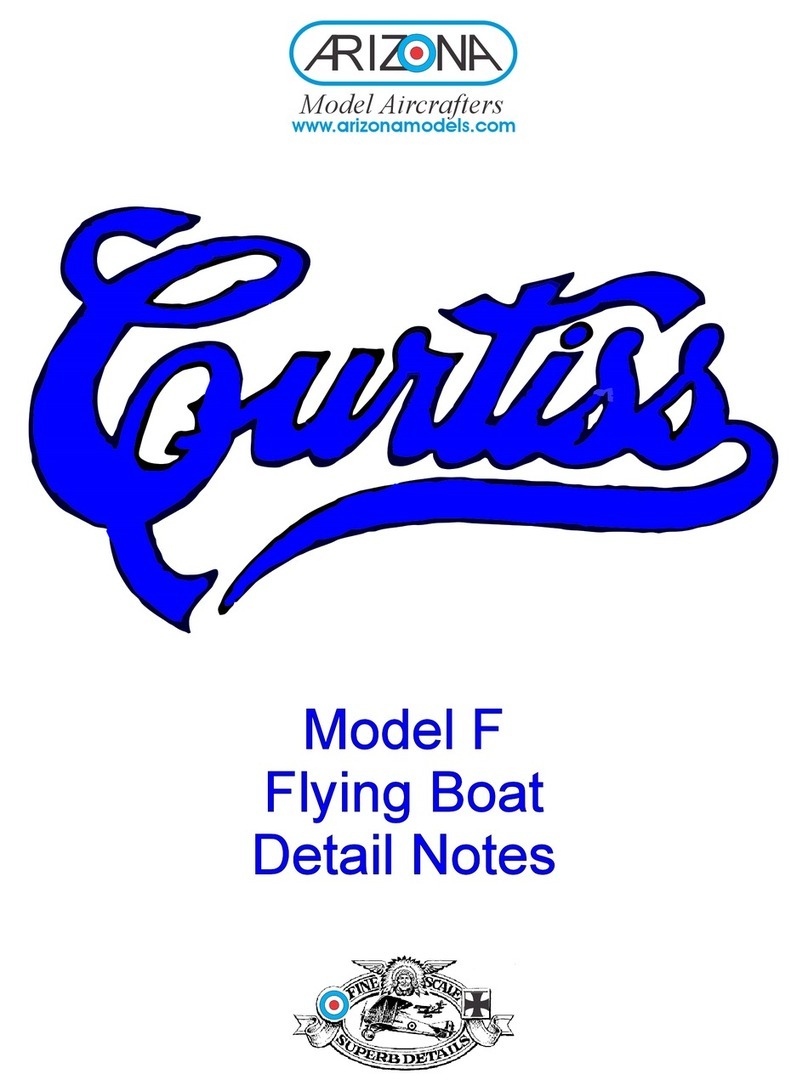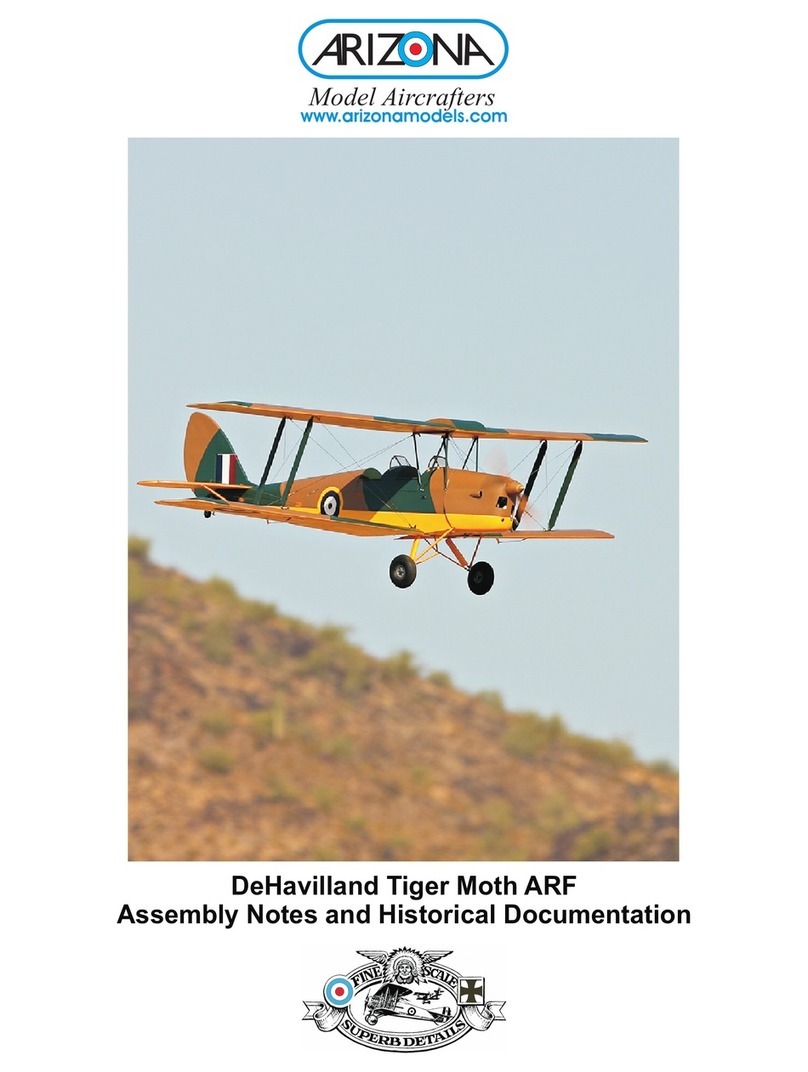
Introduction to the Sommer Monoplane
Roger Sommer was French aviator number 29. He built many biplane and monoplane designs. One of his most
advanced aeroplanes was the 1912 type E. It was an efficient and fast aircraft for its day. Documentation is limited,
but thru the Smithsonian and Musee de l Air, some pictures and written materials are available. The ¼ scale
Sommer monoplane has been flight tested for over a five-year period. It has competed very well in the U.S. Scale
Masters qualifiers winning a First Place at one and qualifying at others. It has also won first place in static
competitions. The model is a very good flyer. The wings remove easily for transportation and yet it can be rigged
for flying in less than fifteen minutes. This is a practical and fun vintage scale aeroplane to build and fly! And, it
shows you how effective wing warping really is.
Please read all of the instructions first and familiarize yourself with the plans and pieces before beginning actual
construction. Now is the time to let me know if you have questions. The building procedure for the Sommer
Monoplane is very straightforward. Because of the limited documentation available for an aeroplane of 1912, you
may use your creativity and imagination for some of the exterior detail work. For example, on both prototypes I
used real rib stitching on all flying surfaces. It really does add to the structural integrity of the wings and tail-
pieces. Battens are also used on the exterior of the first four ribs from the root rib out. They were usually nailed in
place on the originals to assist in holding the fabric to the ribs behind the prop blast .You may want to add more
battens or use none at all. You can use simulated rib stitching, or just rib tape with no stitching. No one really
knows if or how any rib stitching was used. So, it is your option. Surface details around the front and sides of the
fuselage are apparent in the included photos. Use your imagination a bit if you want a different look. Just as in the
days of the original, many different finishing methods were used. I added litho plate to the front of the fuselage
sides, as it appears the original Sommer had metal sides. Color choices are also optional. As stated in many
publications, the fabric covering was a linen or cotton type and the color ranged from white to buff to brown.
Both of the Sommer prototypes have been flying very successfully for years! “Zenoah 23’s” power them. It is my
engine of choice. Never in the hundreds of fights has there been a dead stick by engine failure. That is a critical
factor in flying these old antiques. They do not glide endlessly with all of the drag from the wires! Dead sticks
tempt fate too much as it is not always possible to make the field if a motor quits. Use a good reliable motor!
The Sommers have been test flown with balance points ranging from 25-40% of the wing chord. The best overall
performance and stability is in the range of 30%. The nose moment is short, so it may take some added weights to
the firewall to achieve the balance you want.
Of course one of the most fun and asked about features of the Sommer, is the wing warping! Pilots who fly
aileron-controlled airplanes are very surprised to see a wing warper. They are amazed at how responsive the
Sommer is to roll-control by warping the wings. Believe me, wing- warping works very well! You do need to learn
how to co-ordinate rudder in those turns though. But, you learned that a long time ago right? Once you have
experienced a flight or two with the Sommer, you will become very confident and comfortable with its flight
characteristics. Note: I use J.R. high torque servos in my Sommers to control the wing warping bellcrank. They are
standard size yet produce over 100 in oz. of torque. I have never had a failure in 5 years flying both of my Sommer
monoplanes! I also use batteries of 1800mah size to support the high torque servo drain.
All of us have our favorite adhesives and glues for building. Particular kinds of glues are not called for in the
manual as it is presumed you have knowledge of all the different kinds of adhesives available. Sommer prototypes
were built using ca’s for initial lay-up, followed by brushed on aliphatic resins in the joints. Contact cement was
used for the exterior ply sides and outside layers of lithoplate. Epoxies were used in all high stress areas.



































